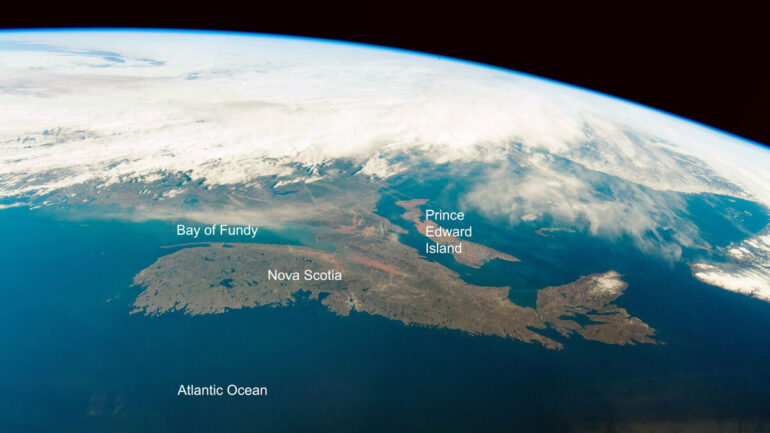The Atlantic Ocean was born roughly 200 million years ago when the supercontinent Pangea began to break apart. As continental crust stretched and fractured, oceanic crust took its place. To investigate this rifting process, scientists can analyze the structure of the present-day eastern North American margin, where North America and the Atlantic Ocean meet. The composition of the crust and upper mantle provides clues about geological processes that accompanied continental breakup.
One activity that may be important in this process is magmatism. For example, the portion of the eastern North American margin associated with the eastern United States has thick sections of igneous rock that classify it as magma-rich. However, there are also magma-poor parts of the margin offshore of Nova Scotia and Newfoundland. Using an advanced data analysis approach, Jian et al. developed a high-resolution seismic model to investigate the magma-poor Nova Scotia margin.
The team used a technique known as full-wave inversion to analyze seismic waves captured by 78 ocean bottom seismometers in response to pulses from an array of air guns. By including all the information in the seismic waveforms, the researchers produced a high-resolution velocity model that was used to produce a detailed image indicating how seismic waves were reflected at different positions and depths.
On the basis of these data, Jian and colleagues identified distinct domains across the margin, representing stages of rift formation. They uncovered features suggesting that a magmatic event accompanied the final continental breakup at the Nova Scotia margin. This event forms a boundary between thinned continental crust and oceanic crust.
These results provide a new picture about what happened in a region offshore of northeastern Nova Scotia that has been thought to be amagmatic. The findings support evidence of a role for magmatism in continental breakup at magma-poor margins elsewhere, as well.
More information:
Hanchao Jian et al, New Insights Into the Rift to Drift Transition Across the Northeastern Nova Scotian Margin From Wide‐Angle Seismic Waveform Inversion and Reflection Imaging, Journal of Geophysical Research: Solid Earth (2021). DOI: 10.1029/2021JB022201
Provided by
American Geophysical Union
This story is republished courtesy of Eos, hosted by the American Geophysical Union. Read the original story here.
Citation:
The role of magma in the birth of the Atlantic Ocean (2022, January 25)
